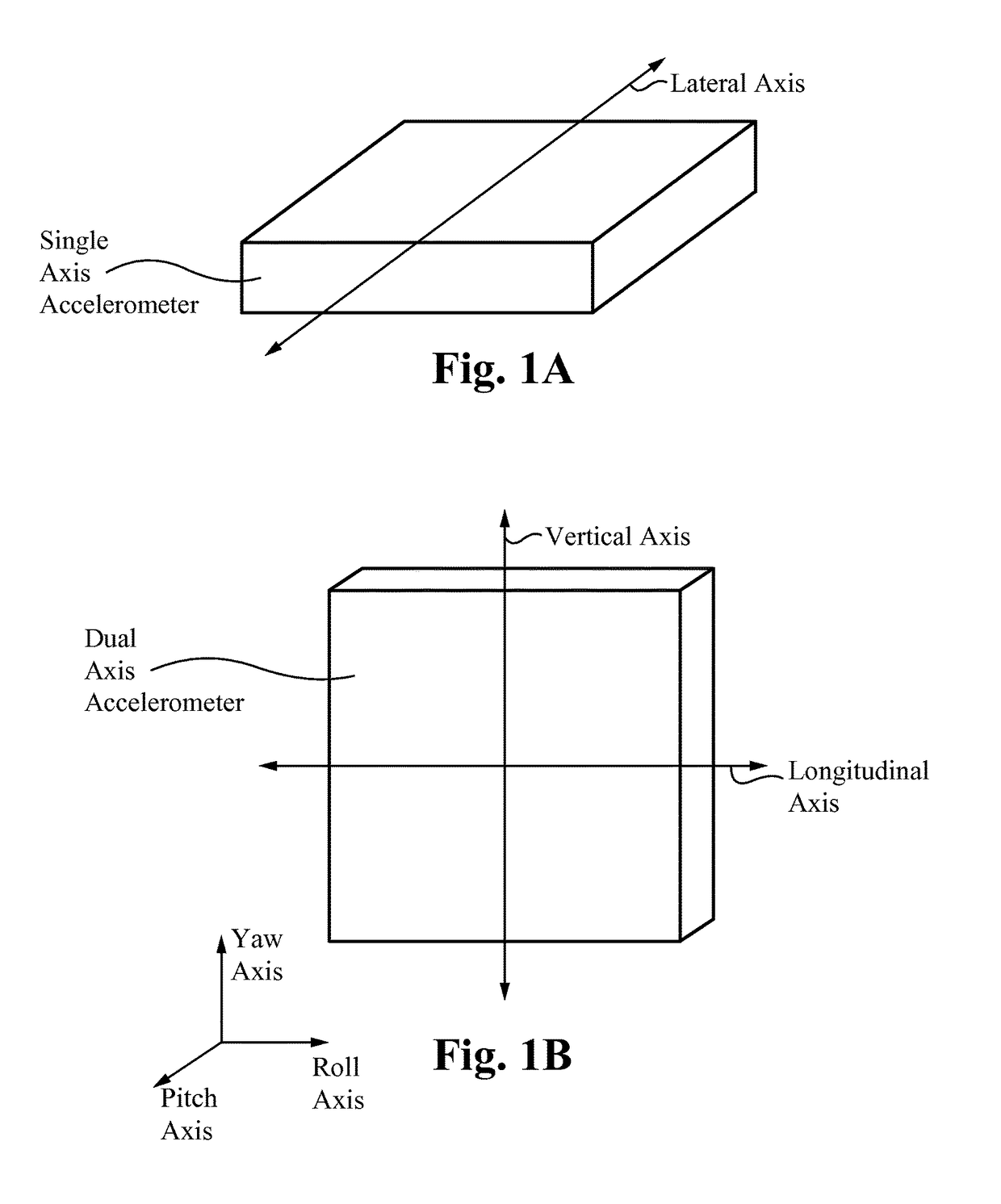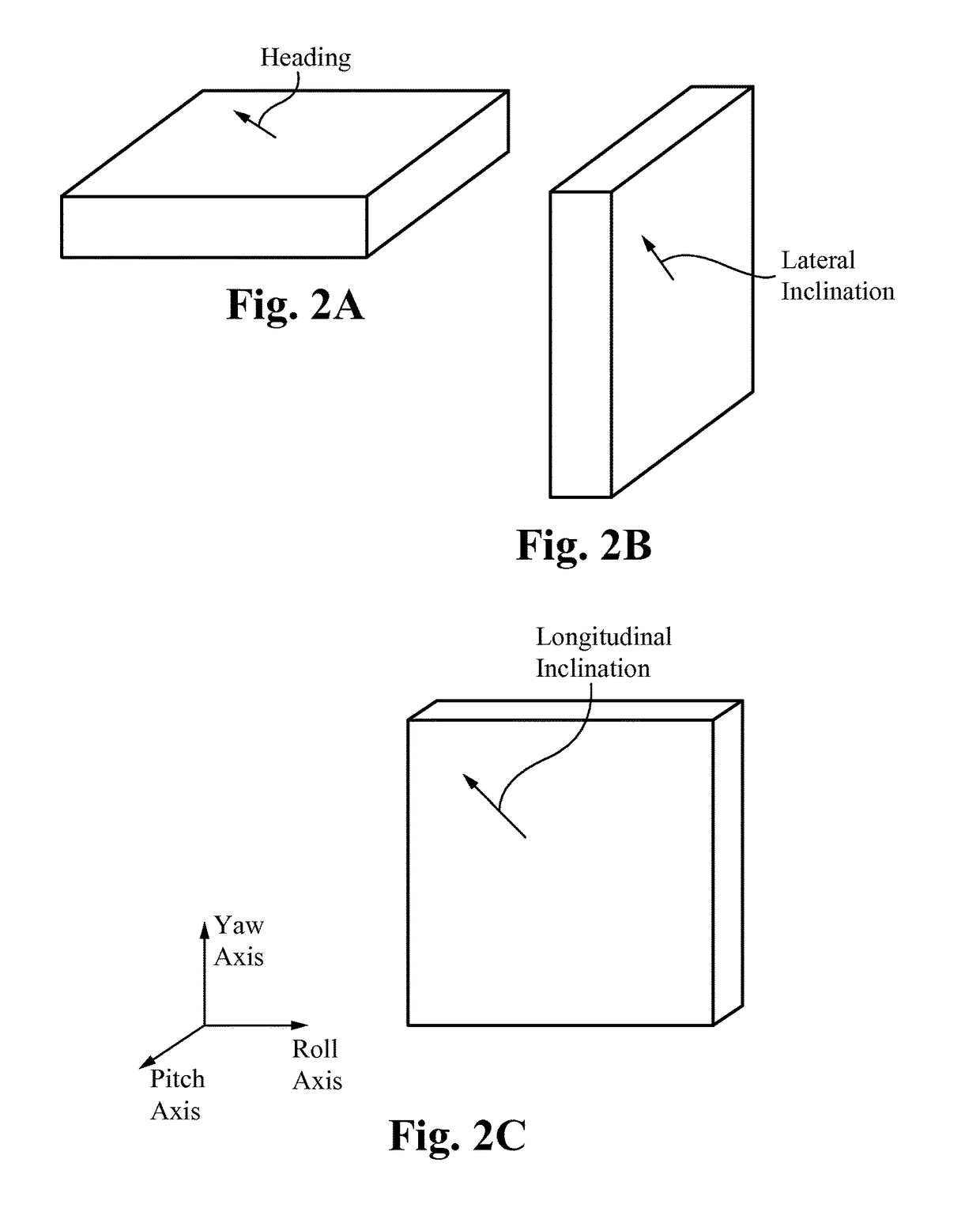Absolute acceleration sensor for use within moving vehicles
a technology of absolute acceleration and vehicle, applied in the direction of instruments, cycle equipment, navigation instruments, etc., can solve the problems of limiting the effectiveness of the signal, not advising the following driver of imminent braking, and precisely adjusting for gravitational forces
- Summary
- Abstract
- Description
- Claims
- Application Information
AI Technical Summary
Benefits of technology
Problems solved by technology
Method used
Image
Examples
example 1
Collision Avoidance
[0065]FIG. 3A is a schematic view illustrating the components of the rear-end collision avoidance system 300, warning drivers of a subject vehicle's deceleration, in accordance with one embodiment of the present invention. The rear-end collision avoidance system 300 comprises an accelerometer-gyroscopic sensor 310, a braking system engagement detector 320, a throttle engagement detector 330, and a control device 340. The accelerometer-gyroscopic sensor 310 is coupled to the control device 340, detects an absolute longitudinal deceleration of the vehicle, and sends a signal to the control device 340. The braking system engagement detector 320 is also coupled to the control device 340, detects any engagement of the braking system of the vehicle, and sends a signal to the control device 340. The throttle engagement detector 330 is also coupled to the control device 340 and detects engagement of the throttle. In alternative embodiments, the present invention also incl...
example 2
over Systems
[0134]In some embodiments of this invention, outputs from the sensing of absolute lateral acceleration are used to adjust suspension systems by stiffening outside suspension and / or loosening inside suspension of moving vehicles. Further, in some other embodiments, simple lateral acceleration is used to adjust suspension systems during turning.
[0135]When lateral acceleration or force is applied to a vehicle, it tends to lean in the direction opposite to the force being applied, due in part to the softness of their suspension systems. This moves the center of gravity further off center and in some cases outside of their wheelbase approaching the critical rollover point. Stiffening the outside suspension and / or loosening the inside suspension keeps the center of gravity of vehicles within a tighter envelope relative to the wheelbase. This inversely affects the propensity, especially in high center of gravity loaded vehicles, to rollover when the center of gravity of their l...
example 3
ce Monitoring Systems
[0140]Due to fuel efficiency goals and competitive pressures late model vehicles have the ability to monitor engine system performance through an array of sensors and detectors. The absolute accelerometer / gyroscope combination provides the ability to communicate actual power-to-the-ground data for use in engine / vehicle performance computations. In this embodiment, the accelerometer-gyroscopic sensor continuously sums absolute acceleration values to provide both absolute acceleration and actual speed values, which can be used by a manufacturers vehicle computer unit (VCU).
[0141]For example, the system 500 shown in FIG. 5 includes the accelerometer-gyroscopic sensor 510, which delivers actual speed data and absolute acceleration data to a vehicle computer unit (VCU) 520 (or at least the engine monitoring portion thereof). The VCU 520 uses baseline engine performance data 540 to either self-correct through a feedback mechanism, or to issue a warning through the per...
PUM
 Login to View More
Login to View More Abstract
Description
Claims
Application Information
 Login to View More
Login to View More - R&D
- Intellectual Property
- Life Sciences
- Materials
- Tech Scout
- Unparalleled Data Quality
- Higher Quality Content
- 60% Fewer Hallucinations
Browse by: Latest US Patents, China's latest patents, Technical Efficacy Thesaurus, Application Domain, Technology Topic, Popular Technical Reports.
© 2025 PatSnap. All rights reserved.Legal|Privacy policy|Modern Slavery Act Transparency Statement|Sitemap|About US| Contact US: help@patsnap.com



